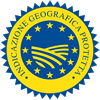Description
The Borrego da Beira PGI is the meat produced from small statured lambs, which are cross bred from three different breeds: the Churra do Campo or Marialveira, the Churra Mondegueira and the Merino da Beira Baixa.
Production Area
Borrego da Beira PGI is produced in the districts of Castelo Branco and Guarda and in a small area in the district of Santarém.
Production Method
The production method of these lambs depends on their geographical area: in the mountains the animals are kept in flocks and fed on hay and branches from chestnut and oak trees and are taken to the high altitude pastures in the summer time; on the plains, on the other hand, the Borrego da Beira live permanently in the open air, graze for food and the lambs are suckled by their mothers. The lambs are slaughtered before they reach a live weight of 12 kg.
Appearance and Flavour
Borrego da Beira PGI is light pink in colour and is an extremely tender, succulent and tasty lamb.
History
The Churra Mondegueira and Churra do Campo or Marialveira breeds of sheep originated from the Ovis Aries Studery, an ancient breed from which all Portuguese sheep descend. As far as the origins of the Borrego da Beira breed is concerned it would appear that it descended from a cross between the Alentejano Merino and the Spanish Merino when the flocks were taken together to the mountain pastures in the summer time. These animals have only been reared for their meat for the last 20 years, before that they were kept for their wool and to supply milk for the many cheese makers in the Beira Baixa area. The shepherds and their families were the only ones who ate the meat. In any case the sheep has always played an important role in the lives of the local population, as it was, for a very long time, before the introduction of other cultures and other sources of food, the only source of income for the agricultural community. In the Borrego da Beira PGI production area it is also known as Borrego da Canastra, the word canastra meaning the basket in which the lamb was traditionally placed, and also as Borrego de leite, since milk is the lamb's sole form of sustenance.
Gastronomy
Borrego da Beira PGI should be stored at a temperature of between 2°C and 4°C. It cannot be frozen before it is sold but it may be frozen once acquired for domestic use. Once bought the meat can only be kept in the fridge for a few days and cannot be eaten earlier than 72 hours after slaughter. This lamb is used in many local, traditional dishes and is excellent cooked simply, in a wood burning oven, with just extra virgin olive oil, salt and garlic. Canja de borrego and caldeirada do dito are also well-known, traditional local dishes made with this lamb. It is also used in the making of traditional, regional sausages, such as Maranhos.
Marketing
This lamb is sold as Borrego da Beira PGI. It is sold refrigerated, in pieces weighing no more than 6 kg. The various cuts, sometimes including the offal, are packed and clearly labelled and sold separately.
Distinctive Features
The Beira Interior region has proved to be an ideal environment for rearing the Borrego da Beira PGI lamb and contributes significantly to the particular and fine quality of this lamb.






